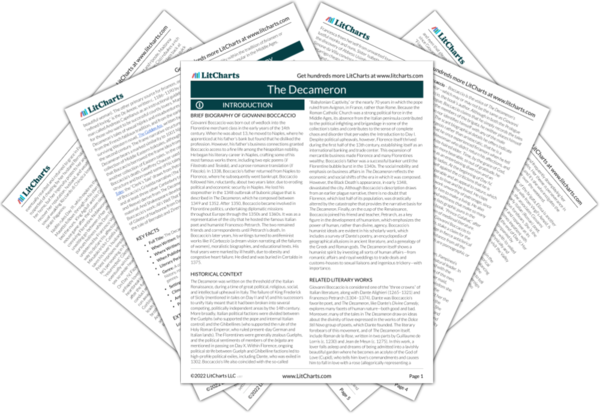Tessa finds Calandrino and Niccolosa in the same sexual position—woman on top—that he berated her for liking in a previous tale, since he believed the inversion had caused him to get pregnant (IX, 3). She recalls this incident and mocks him when she bursts onto the scene. And while Calandrino, exposed as a fool in love with another woman (a prostitute, in fact), does seem to get his comeuppance, the tale also traffics in antifeminist stereotypes, painting Tessa as a shrewish, abusive wife, whose reaction—while justified in essence—is excessive in nature.
